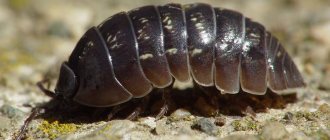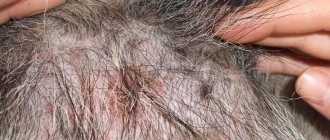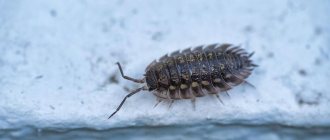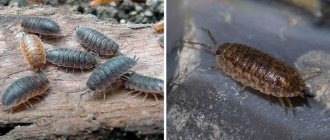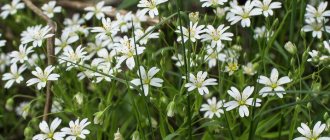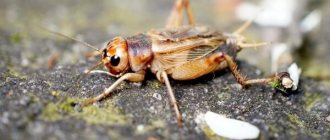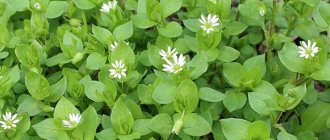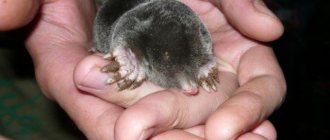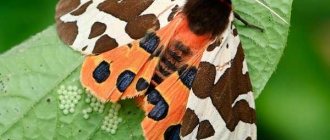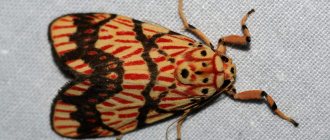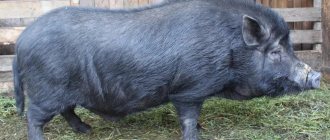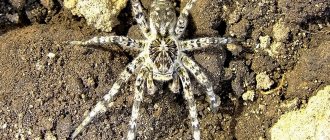Often our home is visited by not the most pleasant guests - insects. Cockroaches, ants, midges, spiders, etc. - this is not the most complete list of illegal occupants. Woodlice often inhabit the kitchen and bathroom. They love places with high humidity and are difficult to get rid of.
An insect such as woodlice belongs to the order of crustaceans. Their body is divided into segments that take an oval shape. Consists of the abdomen, chest and head. Active life is mainly conducted in spring and autumn. Breeding season occurs in summer. The female woodlice carries her eggs in a pouch inside her body and lays them only when she is sure that there are no predators nearby. Woodlice are the most adapted insects of their order for life on land, but they breathe with gills.
Woodlice: photo
Woodlice: photo.
Description of the pest
Name: Woodlice Lat.:
OniscideaClass: Higher crayfish - Malacostraca Order: Isopods - Isopoda
| Habitats: | with high humidity |
| Nutrition: | scavengers |
| Means of destruction: | various chemicals |
In fact, the idea that wood lice are insects is wrong. These small creatures belong to the suborder of crustaceans and are considered one of its most developed representatives.
What do woodlice look like?
Woodlice: structure.
Most woodlice are small in size and their body length is from 1 to 2.5 cm. The color of these creatures is dominated by gray and brown shades. The body of woodlice has an oval, slightly flattened shape and is covered with an arched chitinous shell, divided into movable segments.
Animals have two pairs of antennae, one of which is much better developed than the other. The woodlice's visual organs are located on the sides of the head. The jaws of these crustaceans are intended exclusively for soft food, while the upper pair is devoid of tentacles.
Woodlice have 7 pairs of thoracic limbs. All limbs have the same structure and are used for walking.
How woodlice breathe
Woodlice on plants.
Unlike most other species of crustaceans, woodlice have adapted to life on land. The breathing of these animals is carried out using gills, which are located in the cavity of the internal branches of the thoracic legs.
Woodlice get their oxygen from the moisture covering their gills. That is why they settle in places with high levels of humidity. It is worth noting that some species have even learned to breathe ordinary atmospheric oxygen.
How to get rid of it?
As with other insects, before removing wood lice, it is important to determine the cause of their appearance. Clean your home thoroughly: throw away all wet rags, wash all corners, inspect indoor plants, and clean kitchen cabinets for moldy food.
Carefully inspect the sewer pipes. Are they dripping water? Is there a puddle accumulating somewhere? Is the tap leaking? If you find a leak, call a specialist and fix it.
The first stage of getting rid of woodlice - draining the home - has been completed. Next, it is important to remove existing insects and this is not so easy to do.
Most often, an ant repellent is used to get rid of woodlice. It must be sprayed in habitats. Among folk remedies, the use of alum is popular. They are dissolved in a small amount of water and applied to the places where wood lice appear.
Sometimes insects can appear from neighbors and crawl through the ventilation. In this case, all measures to destroy the guests will be useless. Then you should talk to your neighbors and ask them to take measures to eliminate pests.
Woodlice and chemicals
There are many different means to kill woodlice. They can be divided into:
- Gels;
- Bait traps:
- Crayons;
- Aerosols;
- Dichlorvos:
- Insecticides;
- Poison.
Before using any insect repellent, carefully read the instructions. Follow safety precautions, especially if there are small children or animals in the house. When processing the room, wear gloves on your hands and a protective mask on your face. Afterwards, ventilate the room. It is advisable to leave the house empty at this time and go somewhere for a walk for a couple of hours.
Aphids on roses: 7 effective methods to combat them
Folk remedies for woodlice
Many mothers do not risk using household chemicals due to the presence of small children in the house. For such cases there are folk recipes. The simplest way to make safe potato traps is to make tunnels in the fruit and leave them in woodlice habitats. After some time, the potatoes need to be collected and thrown outside.
Another common way to combat woodlice is to dilute tobacco, red pepper and soda in equal proportions in a liter of water. Use the resulting mixture to wash the insect habitats.
Simple remedies are also effective against woodlice. For example, you can buy boric acid at a pharmacy and use it to treat insects. Table salt has the same properties. It needs to be scattered in places where woodlice are located and soon they will disappear.
Woodlice lifestyle and habitat
Saw woodlice
Not really
Despite their excellent adaptability to life on land, woodlice depend on humidity levels. In some species this dependence is stronger, in others it is weaker, and for this reason some of them settle on the coast of fresh and salt water bodies, while others can feel great in greenhouses, greenhouses, basements and bathrooms.
Where can you find woodlice?
Woodlice are active exclusively at night and therefore it is difficult to encounter them during the day. During daylight, animals hide in shelters that reliably protect them from harmful sunlight. Having settled near a person, the woodlice also chooses a safe place to hide.
In the wild, woodlice can be found:
- under stones;
- inside old, rotten stumps;
- in fallen leaves;
- under rotten trees lying on the ground.
Around people:
- greenhouses and cellars;
- cracks in the walls;
- voids behind baseboards;
- walls of sewer pipes.
What do woodlice eat?
Like other representatives of the crustacean suborder, woodlice are scavengers. In the natural environment, their diet mainly consists of decaying leaves, young shoots and rhizomes. Sometimes healthy parts of plants may also appear on their menu.
Woodlice on a plant.
Woodlice that have settled in residential areas easily adapt and feed on everything they find. The diet of “domestic” woodlice may include:
- small food residues;
- scraps of toilet paper;
- fungus and mold formed on various surfaces;
- soap scum.
Preventive measures
Prevention is based on following three simple rules.
- Purity. We take out the trash on time. We make sure that dirty dishes are not left on kitchen surfaces. Floors and walls are periodically washed well, especially in hard-to-reach places. We monitor the cleanliness of flower trays and flowerpots.
- Humidity. We don’t accumulate mountains of wet clothes, linen, towels. We regularly ventilate the premises. We use air drying devices. We ventilate things on the balcony. We check the functionality of the climate control equipment. We clean ventilation pipes and grilles. We fix plumbing breakdowns in a timely manner.
- Moves. If there are cracks and crevices in the floor or walls, we use polyurethane foam and sealant. If the wallpaper falls off, quickly glue it back up.
Woodlice are a kind of indicator that shows the condition of the apartment. Their presence indicates a low level of cleanliness and hygiene in the premises.
Peculiarities of woodlice reproduction
Woodlice and offspring.
Reproduction in these small crustaceans occurs in a very interesting way. First, copulation occurs and the female's testes are filled with seed. After some time, the female molts, and her body transforms slightly.
After such a restructuring of the body, one part of the seed fertilizes the eggs, while the other continues to be stored in the testes. When the first fertilized eggs are carried and hatched, the remaining seed fertilizes a new batch. It turns out that one copulation allows you to get two broods of small woodlice.
Interesting Facts
- In dry and hot environments, woodlice will increase movement. If you place it in the opposite environment, the effect will be the opposite.
- During the night, woodlice can rise to the height of the seventh floor.
- Ambient temperature affects the body color of these animals.
- In woodlice, the back part of the body molts earlier than the front part. Because of this, it feels like it consists of two parts.
- In California, in some areas, there are ten thousand individuals per square meter.
- If a male woodlice is infected with bacteria, it changes sex.
- Woodlice have blue blood.
- Several species have a non-uniform color and have unusual patterns that are similar to hieroglyphs.
Woodlice habitat
When choosing a place to live, woodlice prefer warm and humid areas. They can be found not only near reservoirs, but also in steppe or even desert areas. The habitat of these crustaceans extends over almost the entire world, but the greatest species diversity is noted in regions with a warm and humid climate.
In cooler climates, woodlice are more likely to live near people. These small crustaceans can be found in places such as:
- greenhouses;
- greenhouses;
- basements;
- cellars;
- bathrooms;
- the inside of old stumps;
- near open garbage and compost pits;
- under fallen leaves or piles of rotting tops;
- under rotten logs and boards.
Why do they start in the apartment?
Woodlice appear in dark, warm and damp places in the house. There are also several other reasons for the appearance of these creatures at home, for example:
- Wet laundry.
- House plants.
- Garbage.
- Old books.
- Dirt.
The following may appear:
- under the bath;
- behind the toilet;
- under the sink;
- between piles of laundry;
- in the pantry;
- in potted plants.
What harm can woodlice cause?
A small number of these crustaceans are not capable of causing serious harm to humans. But, if a large colony of woodlice has settled nearby, the following problems may arise:
- soil compaction and disruption of air circulation in the root system of plants;
- harming young seedlings;
- infection of plants by various infections and fungi;
- spoilage and contamination of food supplies;
- damage to walls and ceilings in the house.
Despite the possible harm, wood lice can also bring benefits. In the process of their life activity, they enrich the soil with useful substances and make it more fertile.
Prevention of recurrence
- The house should be dry and clean.
- Keep an eye on plumbing and cracks in the house.
- Remove excess water after showering.
- Wash clothes.
- Do not leave laundry after washing, carefully remove any remaining water from the room.
- In the bathroom, it is not advisable to dry freshly washed clothes or purchase a dehumidifier.
- Do not leave dirty dishes in the kitchen.
Various species of woodlice have adapted to different environmental conditions , and a semi-rigid shell helps them in this. To prevent these creatures from appearing in your home, you should follow a number of the above methods to avoid the appearance of woodlice, since it is better to follow these rules than to later fight with these domestic parasites.
The most common types of woodlice
The species diversity of woodlice is quite large. There are even giant marine species, the body length of which reaches 30-50 cm. On the territory of Russia you can find the three most common species.
Common armadillo
A small species up to 1 cm long. In case of danger, armadillos are able to curl up into a ball. Thus, their body is completely hidden under a durable shell. The armadillo most often lives in cellars and basements.
Rough woodlice
Unlike the armadillo, she cannot curl up into a ring, but she runs very fast. Rough woodlice is very common in residential buildings and apartments, and causes damage to indoor plants and food products.
Woodlouse Rathke
Representatives of this species live in large numbers in Europe and Russia. Their habitats are most often located in dense urban areas. The body of woodlice of this species is more narrowed and flattened, and the shell is light in color.
In large numbers, woodlice will cause discomfort and harm to indoor flowers. They must be dealt with using accessible methods!
Life cycle
Woodlice breed from spring to autumn, and can produce up to 5-6 litters per year. The female carries up to 90 eggs for 40-50 days, and then larvae in a special liquid-filled bladder located on the ventral side of the body. The main difference between larvae and adults is that they have 12 legs, while adults have 14. Before turning into adults, a process that takes about three months, larvae molt up to 14 times. Sometimes parthenogenetic reproduction is observed in woodlice. The total lifespan of the common woodlice is usually between 9 and 12 months.
